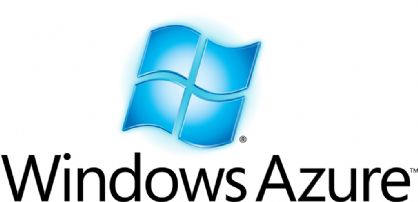A blog post from Bill Hilf, general manager, product management, Windows Azure, Microsoft, has announced Windows Azure Infrastructure Services, a major update to the Azure platform which is being described as "infrastructure on demand".
Based around developments in Windows Azure virtual machines (WAVM) and Windows Azure virtual networks (WAVN), the new capabilities are the "final piece of the puzzle for our cloud solution," according to Ronan Geraghty, server businesses group lead, Microsoft Ireland.
"Customers don’t want to rip and replace their current infrastructure to benefit from the cloud," said Hilf, "they want the strengths of their on-premises investments and the flexibility of the cloud. It’s not only about Infrastructure as a Service (IaaS) or Platform as a Service (PaaS), it’s about Infrastructure Services and Platform Services and hybrid scenarios. The cloud should be an enabler for innovation, and an extension of your organisation’s IT fabric, not just a fancier way to describe cheap infrastructure and application hosting."
Azure has been strengthened with more powerful VMs, (28GB/4 core and 56 GB/8 core), that are aimed at the "most demanding workloads".
"We also learned more about the apps you want to run so we’ve added in a number of new Microsoft validated instances to our list including SQL Server, SharePoint, BizTalk Server, and Dynamics NAV to name a few," said Hilf.
Developments with WAVNs combined with the VM developments now mean that users can easily move VMs from private to public cloud infrastructure. This allows users to enjoy burst capability onto Azure infrastructure when needed.
"There is full mobility, so you can move virtual images back and forth between your on premise environment and the Azure cloud," said Geraghty. "There’s a gallery of prebuilt images for common configurations, or a full custom image builder." These include the capability to run either Windows or Linux flavours.
"Windows Azure Virtual Network is key to ensuring that existing on premise infrastructure can seamlessly connect to what’s running in the cloud," added Geraghty.
"For example, if you are using WAVMs for the compute power, you might actually want your data to remain on premise. You’ll also want to ensure there is a seamless single-sign-on experience for users."
Geragthy said that these new features have been in testing with partners and customers around the world since 2012, and are now being made generally available.
A typical usage scenario would be in moving certain types of applications to the cloud, but retaining flexibility.
"A usage scenario would be if users were moving Tier 2 or 3 applications to the cloud. If it is running in a physical environment, then they can take a snapshot, convert that to a VM and then deploy that to the Windows Azure Infrastructure services," said Geraghty.
The new capabilities give peace of mind to users, said Geraghty, as there is full enterprise support from Microsoft, with an SLA in a similar manner to other Microsoft cloud services.
Hilf also emphasised the pricing structure of Azure Infrastructure Services, and its competitiveness with other offerings.
"We are also announcing a commitment to match Amazon Web Services prices for commodity services such as compute, storage and bandwidth. This starts with reducing our GA prices on Virtual Machines and Cloud Services by 21-33%. Regardless of how you choose to buy Windows Azure, you’ll get the benefit of this price reduction."
Two early users were cited in the blog post from Hilf. Digital Air Strike has used the platform for an instant feedback mechanism for all car purchases and service transactions for automotive giant General Motors. The system has enabled the car maker to monitor the health of their customer relationships in near real time, providing deep and valuable business insights.
The other user was Scandinavian giant Telenor, who accomplished a SharePoint upgrade across 13 business units and 12 countries, and reduced set-up time from three months to two weeks and a 70% cost reduction on the test environment.
Now, Microsoft is only provider out there, said Geraghty, who can offer true hybrid cloud solutions that enable customers to augment their existing IT infrastructure with all the benefits that public cloud has to offer.
"We recognise customers have a choice, and that’s why today, we are making it as easy as possible to have it all-a complete hybrid cloud platform, great support, without a price barrier," concluded Hilf.
TechCentral Reporters








Subscribers 0
Fans 0
Followers 0
Followers